BY BRUCE NEASMITH
The early history of our favourite marque in Australia is difficult to ascertain because accurate yearly car and truck new vehicle registration numbers nationally are fragmented. Whilst this is frustrating it is also part of the charm because Studebaker in Australia pre-date the introduction of the motor vehicle. With Studebaker commencing the building of horse drawn wagons in the USA in 1852 it is known that by the 1880’s there was a trickle of imports into Australia of buggies and wagons in the upper echelons. To this day there is a small number of these horse drawn high wheelers left now in the care of people who seem to like their horses as much as they do their sulkies. Your chances of a barn find are pretty slim but be on the lookout for some of the harnesses where the buckles may have survived as these often has ‘Studebaker’ cast into the body.
Up until 1929 when accurate records are available, 4,970 Studebakers were registered as new cars or trucks in Australia. Awareness of Studebaker was highlighted to World War 1 soldiers who came to respect the rugged quality of gun and troop carriers involved in that campaign and when the ‘Light Six’ series of cars became available during 1920-1923 sales rose as the price was lower than those Studebakers which had been made in the teens. By 1920 Studebaker stopped the manufacture of vehicles meant to be horse drawn and concentrated on cars and trucks which it had been building since 1902. It is known that a small number of ‘EMF’ vehicles (a companion brand to Studebaker) came into Australia around 1910 but it is not known if any of the early Studebaker Electrics made it here.
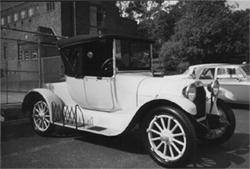
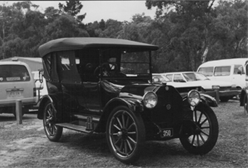
Much of the period adverting from the 1920’s concentrated either on the President series or another companion brand, the Erskine. whereas the President was a full blown luxury car in Australia, the Erskine had been manufactured mainly as an export marque by Studebaker, with eyes on Europe. It was a quality lower priced vehicle which met with success in Australia but overall world sales could not sustain the product. Altogether 1,109 Erskines were sold in Australia over a 5 year period.
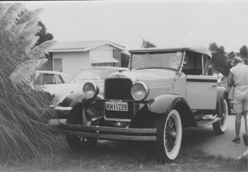
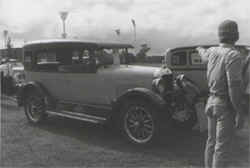
During 1930-1934, 1679 Studebaker vehicles were sold but due to the depression sales of the President series dropped to be replaced mostly by the Director and Dictator series. There were some Rocknes sold but their numbers would have been small. Studebaker owned Pierce-Arrow at this time but their sales in Australia were miniscule as they were an ultra luxury car. In America the Studebaker Company went into receivership in 1933 as sales dropped due to the Depression but by 1934 they were trading their way out of the depth of trouble. They brought to market a new aerodynamic styling to mixed reception in 1934, very few of which made there way to Australia but there are survivors. Any Studebaker available as a new car during the Depression is very much a rarity today if it survives.
By 1935 lower priced Presidents were available in Australia and their revised styling popular and sales were 798, which is most respectable. Of course this figure includes commercial vehicles and lower series cars to the President, said pattern continuing until World War II. For 1936 sales were 745 followed by 892 which proved to be the most popular year until 1962. The following year saw a credit squeeze and sales dropped to 554 for 1938. The cars were popular and stood out in the crowd but they were comparatively expensive with the Ford V8 being the most popular American car of the era. New styling with a distinctive split grill saw sales of 497 vehicles for 1939 followed by 273 for 1940 most of which were 1939 leftovers.
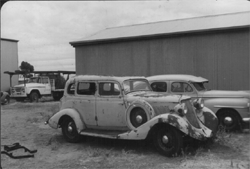
1934 Sedan
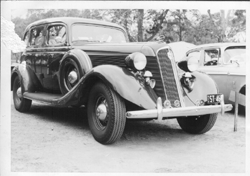
1935 Commander
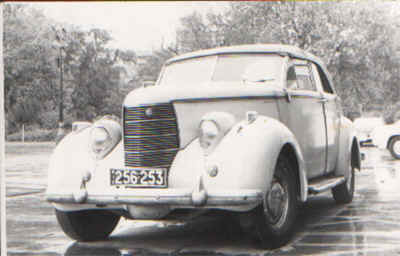
1938 Commander Convertible Sedan
Australia was now involved in WW II and new registrations dropped to a trickle, 43 in 1941, 44 in 1942, 7 in 1943, 3 in 1944 and 6 in 1945. Very few new Studebakers cars came into Australia in 1941/42 and the cars that made it out of storage were for essential services such as doctors and the fire brigade. A large number of Studebaker 6×6 army trucks were used by the Allies during WW II and on cessation of war a number of these came to market for Dept. of Supply, most being brought by farmers and the fire brigades where they still hold a reputation for getting in and out of tight places. It was a shame that WW II intervened on Studebaker’s activities because the Champion series had been launched in America in 1939 ant it met with solid approval on the home market as was as in Australia.
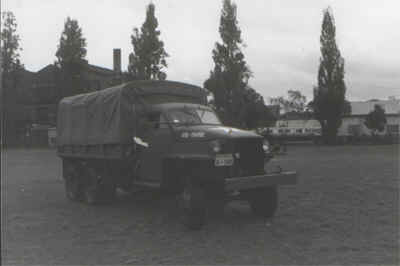
1945 6×6 Army Truck
The year 1946 saw the introduction of the first post war cars which were warmed over 1942 models. Studebaker dropped the President and Commander with Champion being the only cars available which must have seemed a strange move at the time but Studebaker had big plans for 1947. New registrations of Studebakers in 1946 were 219, which was shared in numbers by cars and trucks. So for 1947 and the first of the true postwar models Studebaker tried to gain an advantage in the home market by being ‘first by far with a postwar car’ which is only partially true but no one can deny that the styling that they brought to the market at this time was streets ahead of the opposition, being truly revolutionary. Sales in Australia shot up to 757 units in 1947 but a fair number of these were still trucks. Australia had a largely rural based economy and the need for new trucks on the land outweighed the desire of the new cars. But the did make it in albeit, mostly sedans but the coupes that followed were a revolution with some old timers still saying they couldn’t work out if they were coming or going.
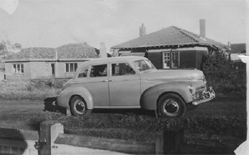
1946 Champion
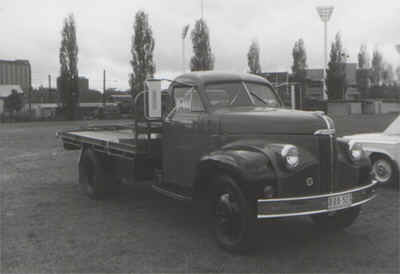
1947 Champion Starlight Coupe
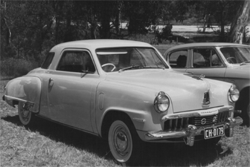
1947 M16 Tray Truck
For 1948 car sales dropped to 285 units, this time with more cars sold than trucks but most were leftover 1947 models. For 1949 sales rose to 369 in total but only 73 were cars; true 1948 and 1949 model cars are rare in Australia. The government had enacted strict import quotas on cars of American origin and this coupled with the material shortages of steel brought on by the Korean conflict which was at its beginning saw overall new vehicle registrations drop to 267 units in 1950, of which only 25 were cars. This is a shame as 1950 was Studebaker’s record production year and the bullet nose style of cars which had a ‘love it or hate it’ reaction at the time was hardly tested here. It is known that this year saw the beginning of black market deals to ensure purchase of certain highly priced cars and all would have sold new at a premium. The continuation of Korea saw sales drop to 103, of which 61 cars found their way here Other than just Champions, some Land Cruisers were imported and the coupes that made it out here continued to thrill.
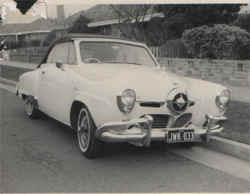
1950 Champion Convertible
The year 1952 was Studebaker’s 100th Anniversary and many promotional items survive from this period. Sales increased to 226 vehicles, of which 97 where cars. There was a very small number of pillarless hardtop coupes brought out with the sedans and a small number survive. By this time too the ‘2R5 utility had gained a solid reputation following on from the ‘M’ series trucks. Just as 1939 and 1947 were important to Studebaker’s future, 1953 was critical due to the collapse of the seller’s market in America. Studebaker brought to market a revolutionary design but botched the engineering and anticipated demand so badly that the end of the company as a vehicle producer can be traced back to this point.
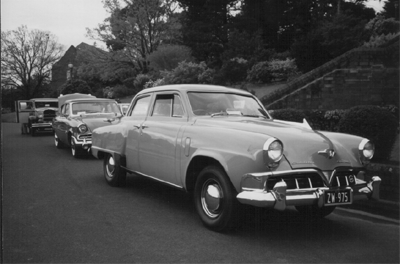
1952 Champion Sedan
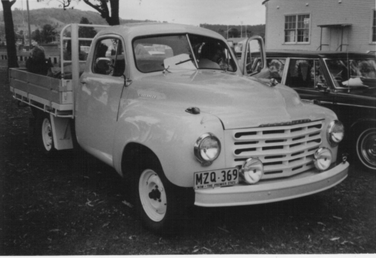
1952 2R5 Pickup
In Australia, 1953 sales were 190 units with overall car numbers increasing to 141 units, most being Champion sedans but there was some Land Cruisers. The apparent lack of coupes at the time was largely due to supply being unable to keep up with the demand in America. For 1954 sales dropped to 87 units but at least 84 of them were cars. Even two of the new station wagons made it out here but from here onwards, sales of commercial vehicles in Australia dropped to a trickle. During 1954 Studebaker paid for their past mistakes being subject to a takeover by Packard. At this time, it was reported to be a merger but for a time the two companies continued to trade a separate entities, the President of Studebaker competing with Packard’s lower priced range. The corporate balance sheet was another matter and the extensive re-invention of the Packard marque for 1955 coupled with availability and warranty work drained the Studebaker Packard Corporation of much needed funds, For 1955 Studebaker slapped on the chrome to hide what had been a clean design and of course, inline with then current desires, sales not upwards in America and by med year a re-styling to incorporates a wrap around windscreen was done for the sedan line. Sales in Australia were 108 including 95 cars and 13 station wagons
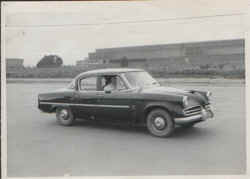
1953 Champion sedan
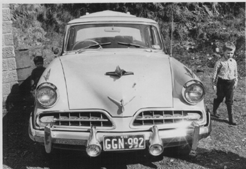
1954 Land Cruiser
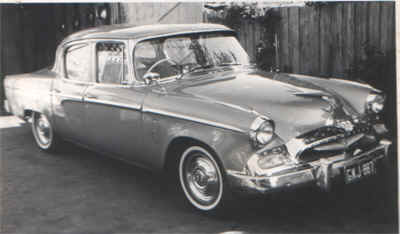
1955 Commander Sedan
1956 saw a new trim Studebaker brought to market, trim compared to the overladen chrome barges being sold by most of the competition. What should have been a good sales year was corrupted by talk that the entire corporation was about to fall over due to high costs in the production of Studebakers and low sales of the Packard line. Something had to give and with red ink running on the corporate balance sheet, the decision was taken to drop the Detroit built Packard’s and bring out a cheaper version to appease dealers, based on the Studebaker body shells. Nome of this seemed to matter much in Australia with sales of Studebakers being 112 units of which 103 were sedans and 9 station wagons.
During 1957, 79 sedans and 4 station wagons that were Studebakers got sold in Australia along with 37 Packard sedans. Talking with an old new car sales manager of the time, the only way they could get the Packard’s to move was to emphasise the low price compared to the 1955-56 models, but they weren’t bad cars. As 1958 came around, Studebaker reached a low ebb in America combined Studebaker and Packard sales prompting a purging of the Board of Directors, and a new direction sought for the company. Sales in Australia for the first time included a significant number of Golden Hawks, sales of cars being 74 plus 4 station wagons and with Packard 55 units, made up of 47 sedans, 7 pillarless coupes and 1 Packard Hawk.
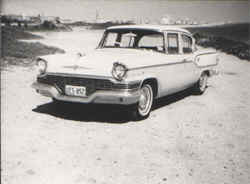
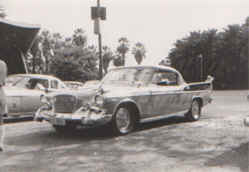
The new direction turned out to be the ‘Lark’ automobile for 1959 along with dumping the Packard marque and all large Studebakers except for the Hawk and truck lines. The corporation hereafter took on an acquisition program to bring into the company businesses which would lessen the impact of hard times in the automobile market. The 1959 sales in Australia were 122 units including 110 cars and 12 station wagons. The Lark automobile turned out to be ideal for Australian conditions, mostly being sold with the V8 which gave it plenty of power compared to the competition. During 1960 the corporation made a decision to set up a local assembly plant so that by the end of the year they were ready for local production of CKD kits in Melbourne. Whilst this was happening, 176 cars including Hawks were sold plus 23 station wagons.
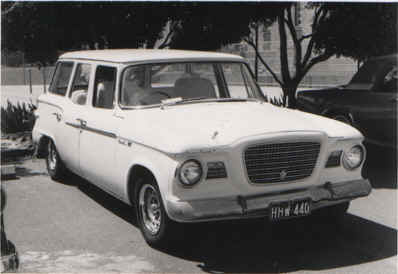
1960 Lark Station Wagon
So 1961 was to be a big year for Studebaker in Australia but another credit squeeze limited sales to 709 units including 590 Larks and Hawks, 111 station wagons plus 8 Champ Pickups. The 1962 saw an increase to 1,069 Larks and Hawks,119 station wagons, 26 commercial vehicles (mostly Champ Pickups), and in America, finally the Packard name was dropped from the company’s name as the Studebaker Corporation continued it acquisitions of other companies, the most remember being STP and Paxton.
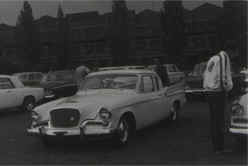
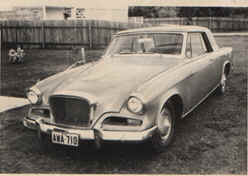
In 1963 was make or break time for the automobiles produced by the Corporation. The fiberglass high performance Avanti vehicle was brought fully to market after initial tooling delays to augment the luxury image of the Gran Turismo Hawks. The Lark name was now being downplayed in America but it was popular elsewhere. In Australia 1,262 cars were built plus 152 station wagons and 27 commercial vehicles. Totalling 1,441 units, it was the highest sales level achieved by Studebaker in Australia. A bit ironic really because sales in America were stalling, the line was stopped in assembly to allow existing inventory to be cleared to make way for the, what looked like, all new ’64s. After some refits and discounting of the 63 leftovers the 1963 line was introduced and whilst initial sales were encouraging, the run could not be sustained in a crowded market place, so in December 1963 production ceased in South Bend and hereafter the cars were made in Canada except for the Hawks, Avantis and trucks, which ceased.
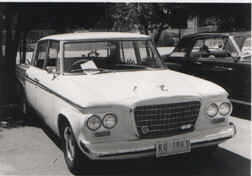
1963 Lark Cruiser
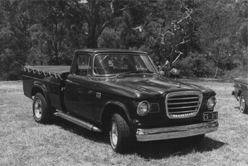
1963 Champ Pickup
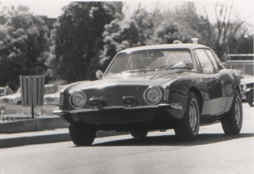
1963 Avanti
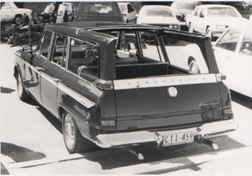
1963 Wagonaire
The effect was felt in Australia as new registration dropped to 991 units including what we regarded as Larks plus the Hawks at 907 total and adding 67 station wagons and 17 commercial vehicles. Australia has some unique variants for 63/64 with Police cars, Ambulances and tow trucks all part of the mix and it must be added at this time that just because we had a local assembly plant, this did not rule out full imports which continued as new cars through the first half of the sixties.
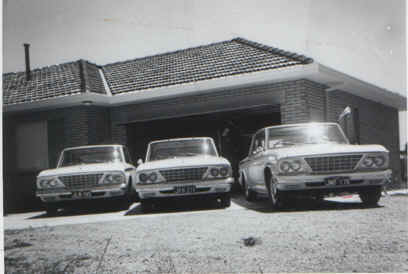
1964 Cruisers
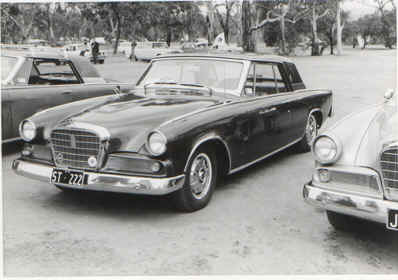
1964 GT Hawk
For 1965, 492 Studebaker engined cars were registered plus 56 McKinnon (Chevy) cars plus 43 station wagons and 14 commercial vehicles. Australia did not receive any true 1966 vehicles and continued assembling 1965 specification cars for 1966 where 83 leftover Studebaker engined cars were registered plus 471 new (Chevy) engined cars along with 53 station wagons and 14 commercial vehicles making a total of 621.
The end was near for Studebaker as a new vehicle in Australia as local assembly ceased. Leftovers were sold in 1967 including 10 Chevy-bakers, 1 station wagon and 2 ambulance bodied wagons, said style being unique to Australia and produced for five years in this country.
The 1968 saw one new Studebaker Cruiser registered in February and the last new Studebaker, also a V8 Cruiser registered in October 1968. Altogether over 20,000 new Studebaker cars were marketed in Australia and the fact that 49 years after the last one sold we still love them, speaks volumes for their character.
